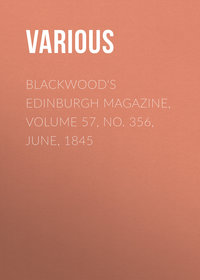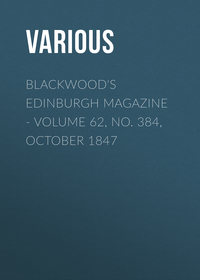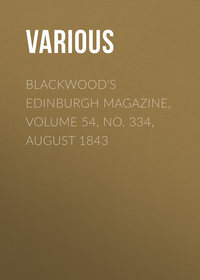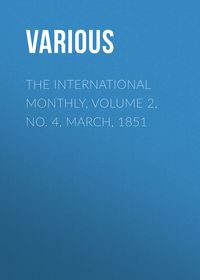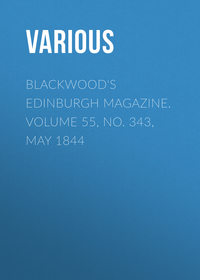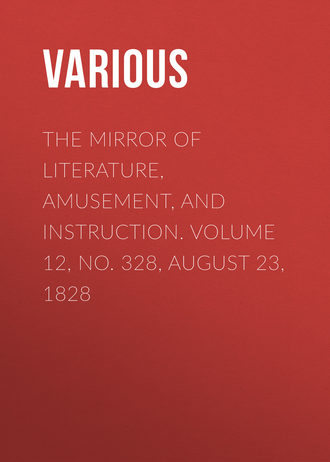 полная версия
полная версияThe Mirror of Literature, Amusement, and Instruction. Volume 12, No. 328, August 23, 1828

Various
The Mirror of Literature, Amusement, and Instruction / Volume 12, No. 328, August 23, 1828
ANCIENT PLAN OF OXFORD CASTLE
By these mysterious ties the busy pow'rOf mem'ry her ideal train preservesIntire; or, when they would elude her watch,Reclaims their fleeting footsteps from the wasteOf dark oblivion.AKENSIDEGentle, courteous, and patient reader—to understand the above plan, it is requisite that you carry your mind's eye back to those troublous times when men enjoyed no protection, but in opposing force to force; and to a period when every man's house was his castle, though not in the metaphorical sense we have since been accustomed to apply these words, viz. to the protection and security of British subjects.
Few portions of our island have been more amply illustrated, by antiquarians, than OXFORD; and from one of these we learn that a Keep Tower, or Castle, existed here a considerable time before the conquest; for Alfred lived here; and Harold Harefoot was crowned and resided here; and one of Alfred's sons struck money here. Hearne has likewise identified this fact by the very ancient and original arms of Oxford, which have a castle represented, with a large ditch and bridge. Upon the same authority we learn that Offa "built walls at Oxford," and by him, therefore, a Saxon castle was originally built at Oxford.
Leland, Dugdale, and Camden, on the other hand, affirm that the castle at Oxford was built by Robert D'Oiley, who came into England with William the Conqueror; and the Chronicles of Osney Abbey, preserved in the Cottonian library, even ascertain the precise date of this great baron's undertaking, viz. A.D. 1071. No question, therefore, can remain, but that this illustrious chieftain either repaired or rebuilt the castle; but as we have shown, upon equal authority, there was a Saxon castle, fit for a royal residence at Oxford, long previous to D'Oiley's time. About the year 1794, several Saxon remains were discovered here; but our engraving represents the castle in Norman times, with Robert D'Oiley's magnificent additions, and is a facsimile of a plan by Ralph Agas, in 1538, which, allowing a little for bad or unskilful drawing, may be taken as a perfect specimen of Norman military architecture, and will, we are persuaded, be received by our readers as a popular and interesting illustration of the warlike character of the age in which the castle was erected.
For the description we are indebted to a MS. account of Anthony Wood, in the Bodleian library, who informs us that at one of its entrances was "a large bridge, which led into a long and broad entry, and so to the chief gate of the castle, the entry itself being fortified, on each side, with a large embattled wall; and having several passages above, from one side to the other, with open spaces between them, through which, in times of storm, whenever any enemy had broken through the first gates of the bridge, and was gotten into the entry, scalding water or stones might be cast down to annoy them."
On passing through the gate, at the end of this long entry, the fortification stretched itself, on the left hand, in a straight line, till it came to a round tower, that was rebuilt in the 19th of Henry III.1 And from thence went a fair embattled wall, guarded for the most part with the mill-stream underneath, till it came to the high tower joining to St. George's church.2
From hence, says the manuscript, the wall went to another gate, now quite down, opposite to the abovementioned; and leading to Osney, over another bridge; close to which joined that lofty and eminent mount, sometime crowned with an embattled tower. The manuscript adds, that for the greater defence of this castle, there was, on one of the sides of it, a barbican; which seems to have not merely been a single tower, but (according to an ancient deed) a place, or outwork, containing several habitations; and from other accounts it further appears, that there were more barbicans than one.
The ruins of certain other towers of the castle, besides the barbicans, and those already described, are also said to have been standing till 1649; when they were pulled down to erect new bulwarks for the parliamentary garrison.
This is an abstract of Anthony Wood's manuscript, which agrees with Agas's drawing, except that in his sketch, the tower between the gate-tower and St. George's, is represented square instead of being round. Antiquarians also infer that in the drawing it was intended to represent the great keep-tower as standing upon the top of the mount, and not by the side of it.3
Some discoveries made in 1794, throw much light on the history of the castle, and warrant a conclusion that in its area were several buildings. Wells were then cleared out, and among the rubbish were found horses' bones, dogs' bones, horse-shoes, and human skeletons; the appearance of the latter is not easily accounted for, unless they were the bodies of malefactors, who had been executed on the gallows placed near the castle, in later ages, that might have been flung in here, instead of being buried under the gibbet. We must however pass over many interesting facts, and content ourselves with a mere reference to the empress Maud being besieged here in 1141, and her miraculous flight with three knights, all escaping the eyes of the besiegers by the brightness of their raiment; Maud having just previously escaped from the castle of the Devizes, as a dead corpse, in a funeral hearse or bier. The reader will not be surprised at the decay of the castle, when he is informed that it was in a dilapidated state in the reign of Edward III.
The castle was situate on the west side of the city of Oxford, on the site of the present county gaol. In 1788 little remained except the tower, which was for some time used as the county prison, and part of the old wall could then be traced 10 feet in thickness. In the castle-yard were the remains of the ancient sessions-house, in which, at the Black Assize, in 1577, the lieutenant of the county, two knights, eighty esquires and justices, and almost all the grand jury, died of a distemper, brought thither and communicated by the prisoners; and nearly one hundred scholars and townsmen fell victims to the same disorder.
We have been somewhat minute in the preceding description, but we hope not more so than the exhaustless curiosity of the public on such subjects appears to warrant. Indeed, these interesting details are only a tithe portion of what we might have abridged. The warlike habits of our ancestors are always attractive topics for inquirers into the history of mankind, and their study is not
Dull and crabbed as some fools suppose,but a treasury or depository of useful knowledge, by enabling the inquirer to draw many valuable inferences from the comparative states of men in the several ages he seeks to illustrate. The enthusiasm of such pursuits is, likewise, an everlasting source of delight; for who can visit such shrines as Netley, St. Albans, or Melrose, without feeling that he is on holy ground; and although we are equally active in our notice of the architectural triumphs of our own times, we must not entirely leave the proud labours of by-gone ages to be clasped in the ponderous folio, or to moulder and lie neglected on the upper shelves of our libraries.
We have to acknowledge the loan of the original of the engraving, from a lineal descendant of D'OILEY4, the founder or repairer of the Castle at Oxford—a name not altogether unknown to our readers.
THE "INTELLECTUAL CAT."
(For the Mirror.)The cat mania has hitherto been more popular in France than in England. To be sure, we have the threadbare story of Whittington and his cat; Mrs. Griggs and her 86 living and 28 dead cats; Peter King and his two cats in rich liveries; Foote's concert of cats; and the newspaper story of tortoiseshell male cats—but in France, cats keep better company, or at least are associated with better names. Thus, MOLIERE had his favourite cat; Madame de Puis, the celebrated harpplayer, settled a pension on her feline friend, which caused a law-suit, and brought into action all the most celebrated lawyers of France; and M. L'Abbe de Fontenu was in the habit of experimenting on these animals, one of which he found could exist twenty-six months without drinking! which fact is recorded in the History of the Royal Academy of Sciences at Paris, 1753.
Our present portrait is, however, of more recent date, being a free translation from Le Furet de Londres, a French paper published in London, whose columns are an agreeable accompaniment for a cup of coffee. It is a mere bagatelle, and as an amusive trifle may not be unacceptable.
My pretty little Puss, it is high time that I should pay a just tribute to your merits. We often talk of people who do not esteem you; therefore, why should I blush to give publicity to your perfection?
You are exceedingly well made; your fur boasts of the delicate varieties of the tiger; your eyes are lively and pleasing; your velvet coat and tail are of enviable beauty; and your agility, gracefulness, and docility are, indeed, the admiration of all who behold you! Your moral qualities are not less estimable; and we will attempt to recapitulate them.
In the first place, you love me dearly, or at least you load me with caresses; unless, like the rest of the world, you love me for yourself's sake. I know well that you like me less than a slice of mutton, or the leg of a fowl, but that is very simple; I am your master, and a leg of mutton is as good again as one master, twice as good as two masters, &c.
You possess great sense, and good sense too, for you have precisely such as is most useful to you; for every other kind of knowledge will make you appear foolish.
Nature has given you nails, which men unpolitely call claws; they are admirably constructed, and well jointed in a membrane, which is extended or drawn up like the fingers of a glove; and at pleasure it becomes a terrific claw, or a paw of velvet.
You understand the physical laws of good and evil. A cat who strangles another will not be more culpable than a man who kills his fellow men. My dear Cat, the great Hobbes never reasoned more clearly than you do!
You forget the past—you dream not of the future; but you turn the present to account. Time flies not with you, but stands still, and all your moments appear but as one. You know that your muscles will give action to your limbs, and you know no other cause of your existence, than existence itself. My dear Cat, you are a profound materialist!
You flatter the master who caresses you, you lick the hand that feeds you, you fly from a larger animal than yourself, whilst you unsparingly prey on the smaller ones. My dear Cat, you are a profound politician!
You live peaceably with the dog, who is your messmate; in gratitude to me, you regulate your reception, good or bad, of all the animals under my roof; thus, you raise your claw against such as you imagine mine enemies, while you prick up your tail at the sight of my friends. My dear Cat, you are a profound moralist!
When you promenade your graceful limbs upon a roof, on the edge of a casement, or in some situation equally perilous, you show your dexterity in opposing the bulk of your body to the danger. Your muscles extend or relax themselves with judgment, and you enjoy security where other animals would be petrified with fear. My dear Cat, you perfectly understand the laws of gravity!
If through inadvertence, blundering, or haste, you lose your support or hold, then you are admirable; you bend yourself in raising your back, and carry the centre of gravity towards the umbilical region, by which means you fall on your feet. My dear Cat, you are an excellent natural philosopher!
If you travel in darkness, you expand the pupil of your eye, which, in forming a perfect circle, describes a larger surface, and collects the greater part of the luminous rays which are scattered in the atmosphere. When you appear in daylight, your pupil takes an elliptic form, diminishes, and receives only a portion of these rays, an excess of which would injure your retina. My dear Cat, you are a perfect optician!
When you wish to descend a precipice, you calculate the distance of the solid points with astonishing accuracy. In the first place, you dangle your legs as if to measure the space, which you divide in your judgment, by the motions of your feet; then you throw yourself exactly upon the wished-for spot, the distance to which you have compared with the effect on your muscles. My dear Cat, you are a skilful geometrician!
When you wander in the country, you examine plants with judicious nicety; you soon select that kind which pleases you, when you roll yourself on it, and testify your joy by a thousand other gambols; you know also the several grasses, and their medicinal effects on your frame. My dear Cat, you are an excellent botanist!
Your voice merits no less eulogium; for few animals have one so modulated. The rhyming pur of satisfaction, the fawning accents of appeal, the vigorous bursts of passion, and innumerable diatonic varieties, proceed from your larynx, according to the order of nature. My dear Cat, you are a dramatic musician!
In your amusements, you prefer pantomime to dialogue; and you neglect the pen to study the picture. But then what agility! what dancing! what cross-capers! The difficulty never impairs the grace of the feat. Oh, my dear Cat! you are a delightful dancer!
Lastly, my dear Puss, show me a man who possesses as many kinds of knowledge as you do, and I will proclaim him a living cyclopædia, or concentration of human wisdom. But, what do I see? I am praising you, and you are fast asleep! This is still greater philosophy.
STANZAS FOR MUSIC(For the Mirror.)Yes, radiant spirit, thou hast pass'dUnto thy latest home,And o'er our widow'd hearts is castA deep and with'ring gloom!For when on earth thou wert as brightAs angel form might be:And mem'ry shall exist in night,If we think not of thee.For, oh, thy beauty o'er us cameLike a fair sunset beam,And the sweet music of thy nameWas pure as aught might deem.With silent lips we gaz'd on thee,And awe-suspended breath—But thine entrancing witcheryAbideth not in death.And all that we suppos'd most fairIs but a mockery now;No beam illumes the silken hairThat traced thy smiling brow.The cheerless dust upon thee lies,Death's seal is on thee set,But the bright spirit of thine eyesShines o'er our mem'ry yet!As in some dark and hidden shellLies ocean's richest gem,So in our hearts shall ever dwellThe spells thou'st breath'd in them!Why should we weep o'er the young flow'rsThat cluster on thy sod?Stars like them glow in heav'n's bright bow'rsTo light thee up to God!R.A."TROUT BINNING" IN WEST-MORELAND(To the Editor of the Mirror.)—"Now is the time,While yet the dark-brown water aids the guile,To tempt the trout."THOMSON.I have not yet done with this subject; and as it strikes me you are an angler, I think the article a seasonable bait for you.
I was certainly much entertained with your extracts from Sir Humphry Davy's Salmonia; and from your being pleased to mention my name in commenting on its merits, I took the hint, and resolved to send you another leaf from my journal. You will easily imagine the abundance of fish in Westmoreland when I inform you, that they seldom use the line there, except in rivers, since they can take them much easier with their hands as before mentioned. I will now account for the trout frequenting such small brooks. There are frequent floods in that county, at certain periods of the year, which sweep the fish in shoals from the mountain rivulets, or perhaps the fish always go down with the flood, for the rivers and rivulets are all well stocked afterwards; and in my opinion it is on account of the rivers being so full, that great quantities are obliged to inhabit the neighbouring brooks, all which empty themselves in the rivers. At the latter end of the year, that is, the spawning season, the large trouts (which are become very loose and flabby) take to the small brooks to deposit their spawn; after which they return to the rivers. At this time there are, in consequence, many young trouts, which remain, I should imagine, till next year, when I believe they go to the rivers; for during that time I have seldom caught trouts weighing more than from half a pound to a pound, though in such a "beck" as "Cannon's," which runs directly into the Eden, I have taken them at all times very large—and this is how I account for the difference. I should observe, that at the "back end" of the year, immensely large trouts may be caught, which come up to spawn; but they are generally, when caught, immediately thrown into their element again, as they are worth nothing, on account of the looseness of their flesh.
But to the subject. Trout binning is a name given to a peculiar method of taking trout. A man wades any rocky stream (Pot-beck for instance) with a sledge-hammer, with which he strikes every stone likely to contain fish. The force of the blow stuns the fish, and they roll from under the rock half dead, when the "binner" throws them out with his hand.
Night-Fishing.—I have frequently gone out with a fishing party at about ten o'clock at night to spear trout. We supplied ourselves with an eel spear and a lantern, and visited Cannon's "beck." We drew the light gently over the water near the brink. Immediately the light appeared, both trouts and eels were splashing about the lantern in great quantities. We then took the spear, and as they approached, thrust it down upon them, sometimes bringing up with it three or four together. One night we took nearly twenty pounds of trout and eels, which, for the short time we were out, may be considered very fair sport, and some of those were of a very large size.
Should you notice this, I may be led to recur to the subject in a future paper.
W.H.H.
A proud man is a fool in fermentation,that swells and boils over like a porridge-pot.He sets out his feathers like an owl,to swell and seem bigger than he is.THE TOPOGRAPHER
AN EXCURSION TO THE RUINS OF RIEVAULX AND BYLAND ABBEYS; AND TO THE RESIDENCE OF LAURENCE STERNE, COXWOLD, YORKSHIRE(For the Mirror.)"The air around was breathing balm,The aspen scarcely seem'd to sway;And, as a sleeping infant calm,The river stream'd away—Devious as error—deep as love,And blue and bright as heaven above."Alaric A. Watts.Though I am as romantic a being as ever breathed on the face of this beautiful earth; yet, I will promise the reader, that in detailing the events of an interesting day, I will not tinge them with that colouring; yet, such a glorious bard as Wordsworth could, alone, do justice to our excursion. Leave him to wander alone in that woody dell, with the thrilling picture spread around him—the sinking walls of elaborate Gothic, clouded by the hanging woods—the rural dwellings of the illiterate peasantry scattered below the templed mount—and the mourning stream and its rustic bridge—thus entranced, his fairy spirit would pour forth a flood of pensive and philosophic song.
It was on the dawning of a fine morning in August, that I left the brick-and-mortar purlieus of home, and in company with two young friends, commenced this excursion. The diversified chain of the Hambleton Hills, bounding the fruitful valley of Mowbray, rose at the distance of six miles before us; and whose summit we intended reaching before breakfast. The varying aspect of these rocky eminences requires the descriptive charms of Sir Walter Scott, or the pencil of Salvator Rosa, to do them justice. Within two miles of them, you might imagine yourself in the ruins of the Roman amphitheatre, whose circular walls reared their dark-gray forms to the heaven; and the inimitable description which Byron has given us of that edifice, occurs to the recollection; though no waving weeds and dew-nurtured trees crown the apparent ruin—
"Like laurel on the bald first Caesar's head."On a nearer view, they change their appearance, and you might suppose that the remains of some fortified castle, typical of the feudal system, looked over the heather which clothes their rocky sides; whilst the detached pieces of rock, which rolled from the summit eighty years ago, appear amongst the furze, like the tombs of Jewish patriarchs in the valley of Jehosaphat at Jerusalem, darkened by the lapse of ages. To the right of our path lay the solitary and frail memorials of the monastery of Hode, founded by Roger de Mowbray, and afterwards attached to the abbey of Byland. Shortly after passing Hode, we arrived at the base of Hambleton, and began to ascend its rocky front; we had climbed half the ascent, when, on cautiously turning ourselves, an indescribable picture presented itself in the vale and its objects below; the solemn silence of the early hour—the first greeting of the morning sun—the glittering and distant lake of Gormire, guarded by towering hills to the right—and, to the left, rocks which have stood whilst generations of heroes and kings have passed away; and, beyond this vivid scene, in dim perspective, arose the western hills, tinged with delicate blue, and scarcely discernible from the clouds which floated over them. Even the enraptured travellers, who stood gazing from the summit of Mont Blanc, were not more delighted than the enthusiastic trio who looked from the brow of Hambleton on that memorable morning. But our object was not attained, and we set forward with replenished vigour, to cross the heather-heath, whose bleak aspect prepared us for the paradise which smiled below the other side of the hills. The first prominent object which met our view, was the terrace, with its classical temples at each of its terminations; and next, the wood encircled hamlet of Scawton, at whose little alehouse we enjoyed a hearty breakfast; and then set forward to explore our beloved region of Rievaulx; our path being through a mountainous wood, which nearly kissed the sky, and obscured the rustic road which divided it: after several windings through this leafy labyrinth, we arrived at a point where the wood was more open, and the dell considerably wider. It was after passing a picturesque cottage and bridge, that the first view of Rievaulx Abbey broke upon us. It was then that the first outline of its "Gothic grandeur" was displayed to us. Crossing the little bridge of Rieval, we proceeded along the banks of the Rye, which morosely rolled along, scarcely deigning to murmur its complaints to the woody hills which skirted it, as if in pique for the ruin of its sublime temple, and the disappearance of its monastic lords. The village of Rieval, constructed out of the wreck of the spacious abbey, displays some reverence for the preservation of inscriptions dug out of the building; and the little windows which lit the cells of studious monks five hundred years ago, now grace the cottages of illiterate peasants. We took a facsimile of one inscription, in Saxon letters, merely denoting the name of the monastery.
The rustic beauty of the hamlet has been copiously eulogized by antiquarians and provincial historians. The beautiful foliage of its trees, varying in colour, appears like fleecy clouds of verdure, rising one above the other, over which a still deeper shadow is cast by the towering woods on each side of the valley; and in the midst of this fairy region, as if conscious of its proud pre-eminence, rises the sacred edifice, clothed in mourning of nature's deepest shade:5
Oh! many an hour of ecstasyI past within its fading towers;When life, and love, and poesy,Hung on my harp their sweetest flowers.To indulge a little in reverie—"how are the mighty fallen!"—Here was once worshipped the virgin amidst the glittering pomp of monkish solemnity; when burst the beams of morning through the tracery of yon mighty window—
"Shorn of its glass of thousand colourings,"and threw the glowing emblazonry of the tinted pane upon the Mosaic pavement of the choir; while the loud and slowly-pealing matin reverberated through the sumptuous church. Here was interred with ceremony of waxen taper and mid-night requiem, the noble founder of this dilapidated fane, Sir Walter L'Espec, beneath that wreck of pillar and architrave and those carved remains of the chisel's achievement—he who deemed that the sepulchre


